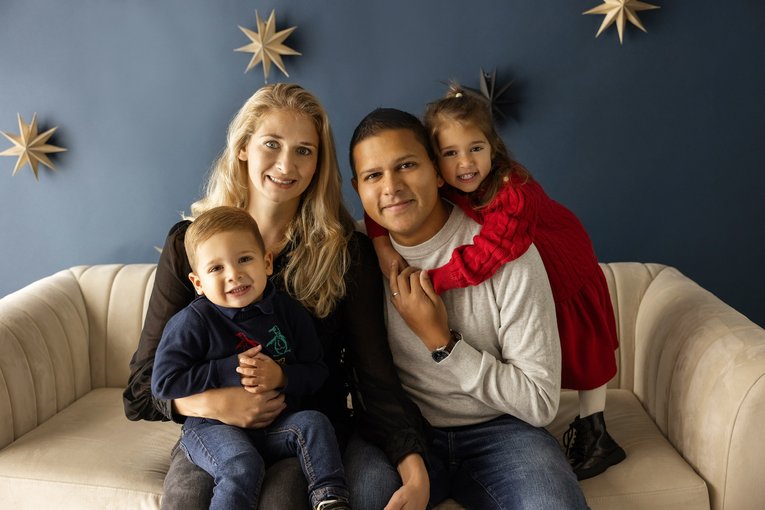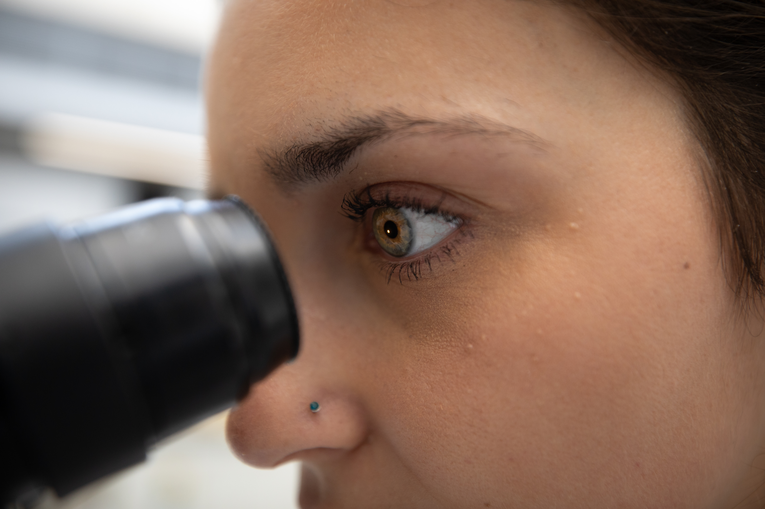
https://www.gosh.nhs.uk/our-research/our-research-infrastructure/nihr-great-ormond-street-hospital-brc/brc-news/identification-genetic-mutation-linked-complications-associated-common-birthmarks/
Identification of genetic mutation linked to complications associated with common birthmarks
18 Mar 2016, 5:42 p.m.
Research led by BRC-supported Dr Veronica Kinsler has found that a subset of a common type of birthmark, which is associated with severe complications, is caused by activating mutations in the genes GNAII and GNAQ. These findings could lead to early identification of infants at risk of serious complications.Dermal melanocytosis (also known as Mongolian blue spots) are common birthmarks, and are often dismissed as a normal finding. When they co-occur with vascular birthmarks they come under the diagnostic heading of phakomatosis pigmentovascularis (PPV), a condition considered previously to be a separate phenotype.
Occassionally Mongolian blue spots and PPV can be associated with congenital glaucoma which can damage vision, and with vascular abnormalities in the brain which can lead to seizures and neurodevelopmental delay. Early detection of glaucoma and vascular abnormalities means treatment can be started sooner, reducing the risk of these complications. Research led by Dr Veronica Kinsler at the Great Ormond Street BRC offers a way for medical teams to determine which children with Mongolian blue spots are at risk of suffering complications.
This study found that extensive dermal melanocytosis and PPV are genetic conditions that are associated with post-zygotic mutations in the genes GNA11 and GNAQ. These mutations were undetectable in the blood, however were detected at very low levels in the affected tissue, suggesting that the disorder is caused by a post-zygotic mutation.
These disorders join a number of others – including Sturge-Weber syndrome (SWS) – in the group of mosaic heterotrimeric G-protein disorders. This leads the way for accurate clinical molecular diagnosis and identification of new-born babies at risk of complications associated with these birthmarks. It also allows investigation into potential therapeutic options for these patients.
The study findings were published in The Journal of Investigative Dermatology. The lead researcher on this paper was Dr Veronica Kinsler, a BRC-supported researcher. The research was supported by the Wellcome Trust.

Mystery of treatment resistant childhood leukaemia uncovered
Discovery of a new cancer cell type could enable testing to predict treatment-resistant blood cancer in children with a certain type of leukaemia.

New Director Designate announced for NIHR GOSH Biomedical Research Centre
Professor Paul Gissen has been announced as the Director Designate of the NIHR GOSH Biomedical Research Centre.

Study linking data from 85% of children in England compares rare cardiac risks post-COVID vs vaccination
A major study which analysed anonymised health records from over 14 million children in England has shown that rare heart and inflammatory issues were more likely - and lasted longer - after COVID-19 infection than after vaccination.


